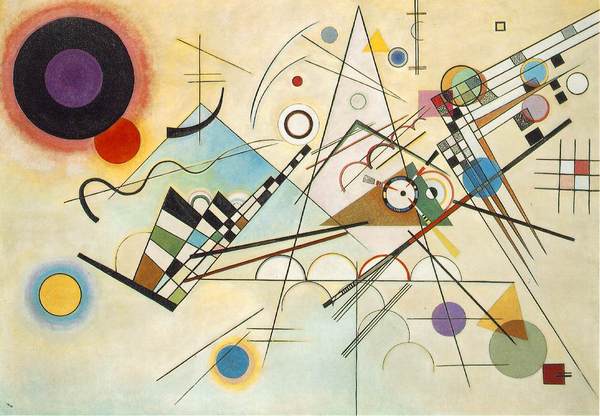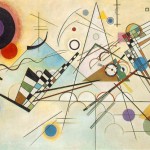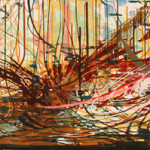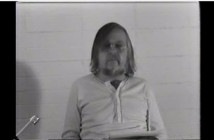A REPORT FROM THE PHANTOM ZONE
Why I love abstract art and think it is getting better.
"The eye is the natural master of pattern recognition. The eye demands satisfaction by invoking in us strong feelings of puzzlement."
- John Whitney (IBM's first Artist in Residence in 1966)
As a science, pattern recognition seems like a simple to understand statistical model of machine learning where raw data is observed and then classified. However, there are some fascinating philosophical implications to pattern recognition as the science is applied to human cognition. Most people are taught that perception functions like Johannes Mueller's notion that nerves telegraph messages to the brain where perception occurs. Others like J. J. Gibson propose different models like ecological psychology where Gibson writes, "The very idea of a retinal pattern-sensation that can be impressed on the neural tissue of the brain is a misconception, for the neural pattern never even existed in the retinal mosaic."(1) Essentially, Gibson promoted Thomas Reid's concept of direct realism and rejected the notion that all of perception is in the mind. Gibson's concepts had a large influence on designers like Donald Norman who wrote "Things That Make Us Smart", which talks about how humans create visual tools like diagrams to "overcome the limitations of brainpower."
As an artist, this is where things get very interesting. The Flynn Effect seems to document that average IQ points seem to be rising about 3 points a decade. While this may not mean that people are getting more intelligent, it certainly means more people are able to achieve higher scores on a test that fundamentally times people on various types of pattern recognition. Have you ever seen an IQ test? How many questions are of the form "Which these best completes the following sequence?" or something conceptually similar like analogy questions, etc.? Our society defines intelligence as pattern recognition. The implications of this are massive and simple at the same time.
Artist throughout history have used pattern recognition in their work for centuries, but perhaps none more than abstract artists like Kandinsky who developed his aesthetic using a specific geometric vocabulary. Kandinsky famously said, "There is only one road to follow, that of analysis of the basic elements in order to arrive ultimately at an adequate graphic expression." But what happens when the viewer's vocabulary of geometry has changed? Kandinsky's abstract images are fundamentally constructed out of a vocabulary of lines and basic shapes such as triangles and circles. Today's viewing public has a much more extensive geometric vocabulary and has become used to seeing and identifying geometric objects that Kandinsky had never heard of, like fractals or patterns from chaos theory. On a fundamental level, the Flynn Effect illustrates that viewers today are much better at pattern recognition and can recognize far more complex patterns than people in the 1940's.
This has two interesting effects. 1. Visiting a museum is a very different viewing experience for 21st century viewers of abstract art than it was for early 20th century viewers. So, the next time you go to a museum and see a Kandinsky, try to look at it with more complex eyes and see what happens. 2. Contemporary abstract art is continuing to get more and more complex in fascinating ways that many people dismiss because the concepts have been around for over a century.
An examples of this is Yoon Lee who just had work at Pierogi in March. Where Kandinsky's painting had squares and circles, Lee's images contain Lorenz attractors and Mandelbrot sets. (While the term "Lorenz attractor" might sound complex, they appear in the graphics shown on the Weather Channel constantly. They are representations of the apparent chaos of a storm that for centuries was thought to be unpredictable, but contemporary scientists can predict the final outcome of storm using chaos theory. Human understanding of math has changed so dramatically over the last 100 years that what used to be viewed as images of abstract and unpredictable storms swirling are now considered useful scientific data.)
I'm very excited by the prospects of more abstract art and how abstract art actually reflects and supports the complexities of our society's abilities to recognize patterns. In many ways, we can see how abstract art fits in with Donald Norman's concept of how humans make visual representations to make us smarter. So go look at more abstract art. It will make you smarter.
- Vasily Kandinsky Composition 8, 1923.
- Yoon Lee, Action-Reaction, acrylic on Acrylite, 2005.






